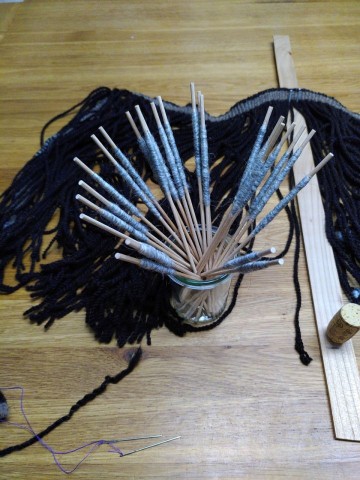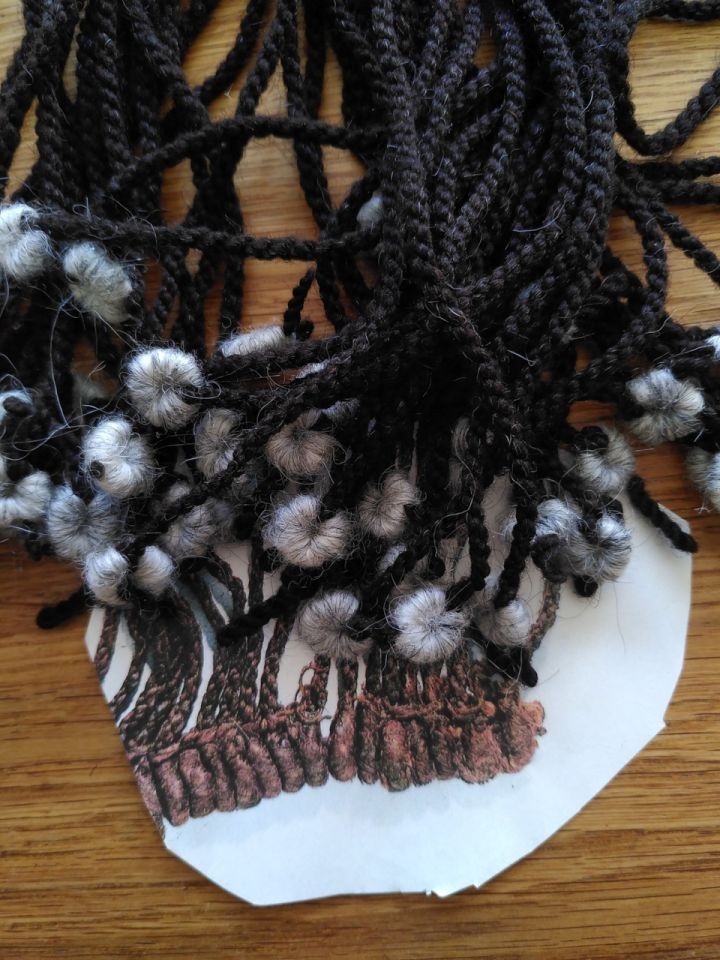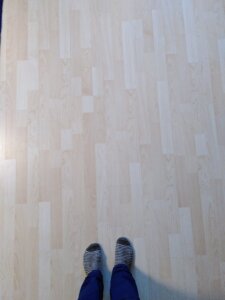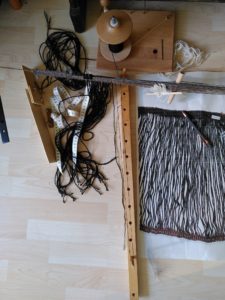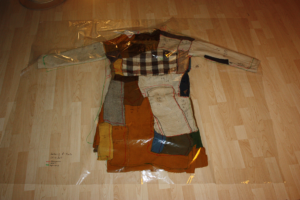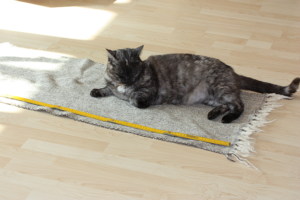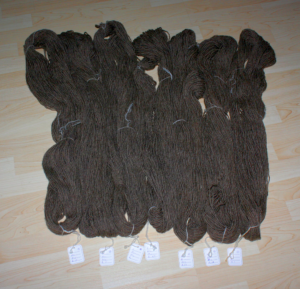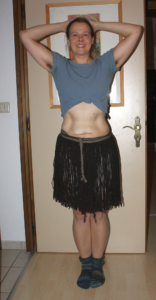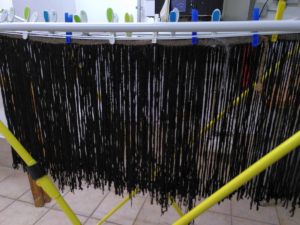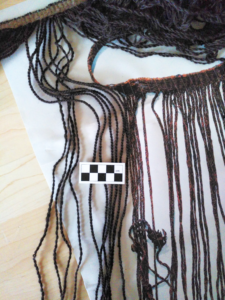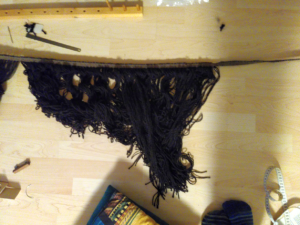You're long overdue an update on the Egtved Project, right? It has slipped into the background a bit with all my writing about the website stuff and issues - though there was work on it going on in the background. Spinning and weaving have both been finished by now, but today, you're getting an update on the corded skirt, and especially my friends the Endless Number Of Rings.
Looking at the cords, it is relatively clear how they were made. There was no such thing as a cord twister back in the Bronze Age, after all, so the possible methods of getting the cords twisted are a) by hand or b) using a stick or something similar to twist them up strongly and then countertwist them together. For the rings, it's not quite as obvious.
The rings at the bottom are completely covered by wool fibres, wrapped around a core and looking very smooth, tight, and orderly. Similar rings can be found at the bottom of the belt tassels of the Trindhoj and Egtved finds. In Hald's publication about the Egtved skirt, she assumes that there is a knot (a single overhand knot) at the end of the cords, that they are then sort of closed into a ring shape, with the ends touching at the bottom, and this ring is then wrapped with fibre.
I have tried a few different methods to get a nice, tidy, tight ring, and to me it looks like there's quite a number of different ways to achieve this. The method I've settled for now is a two-step process, and I'm not sure how plausible it would be for the Bronze Age, but it's at least not completely out due to not having the tools available in that time.
I'm winding my fibre around a little stick, forming a nice, tidy, tight roll. Not too tight, though, and considerably longer than the actual circumference of the little ring, as that seems to work better than making a thicker, shorter roll. I do make a single overhand knot in the cord as Hald suggests; for me, this mostly serves to make sure the ring will sit at the correct height. Measuring the cord to get it to the length it should have is one of the things that gave me a bit of a headache, by the way - these cords are really stretchy.
I then slide the fibre roll off the stick and pull the cord ends through the roll, in opposite directions. The ends come out at the top, and I go over to the other side and back down into the wool roll with each end, aiming to go about a third to a bit more than a third downwards. I will cut off the remaining cord end later on, and the ring will close up.
On the picture, you can still see the ends of the cords sticking out of the rings; you can also see the rings hanging out on top of the printed-out Egtved Skirt image that I use as a reference and size guide. Getting the rings the correct size is something that felt, and still feels, like a real challenge, as there's only limited information from the picture. They are only seen sideways, apart from the very last one on the very leftmost end of the skirt, which is sort of half-visible - so I don't know how closed they look, or how their tops really look, or how thick they seem from their front.
The sides of the rings look a bit squashed up in some places, but after a few hundred years of snuggling up to each other, well, I'd say that can be expected.
This is how my rings look right now, lined up on a stick for a comparison:
I'd say that's close enough for all practical purposes. And I'm really looking forward to what it will look, and feel like when everything is strung up properly!




